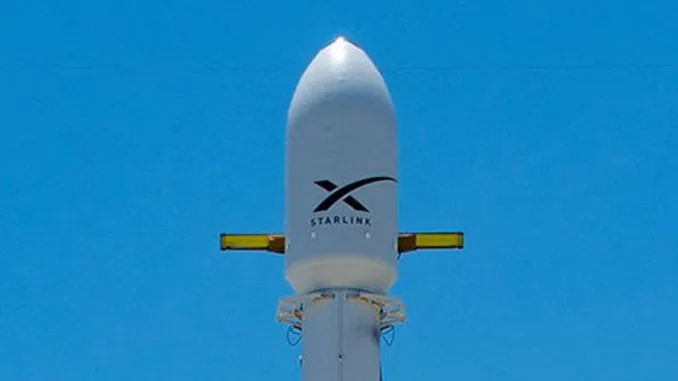Introduction
As the sun rises over Cape Canaveral Space Force Station, anticipation builds among space enthusiasts and industry experts alike. SpaceX, led by the visionary Elon Musk, is set to launch 26 Starlink satellites aboard its reliable Falcon 9 rocket. This launch is just one of many missions aimed at providing global internet coverage to underserved areas worldwide. In this article, we will cover the key aspects of this launch, including the significance of the Starlink project, the technological advancements of the Falcon 9 rocket, and live updates as the launch unfolds.
What is Starlink?
Starlink is SpaceX’s ambitious satellite internet constellation project, designed to deliver high-speed internet access to users across the globe, particularly in rural and remote areas. By deploying thousands of low Earth orbit (LEO) satellites, SpaceX aims to provide broadband internet service that is fast, reliable, and accessible to anyone. As of now, over 1,700 Starlink satellites have already been launched, paving the way for SpaceX to begin beta service in several regions.
The Importance of This Launch
The upcoming launch of 26 new Starlink satellites is a critical step in increasing network capacity and improving overall coverage. Each new satellite strengthens the constellation and ensures that users can access uninterrupted service, especially during peak usage times. In the face of global internet demand that continues to grow exponentially, this launch is a reminder of the importance of innovative solutions to address internet accessibility.
Falcon 9 Rocket: A Marvel of Modern Engineering
SpaceX’s Falcon 9 rocket has become synonymous with reliable launches. With its two-stage structure and reusable first stage, the Falcon 9 has transformed the economics of space travel. Reusability significantly reduces costs, allowing for more frequent launches, which is essential for proliferating satellite constellations like Starlink.
The reliability of Falcon 9 is a product of rigorous testing and improvements over the years, with over 130 successful launches under its belt. This proven track record instills confidence in stakeholders and the general public as we approach the countdown for the launch of the 26 Starlink satellites.
Launch Details
The launch is scheduled for an early morning window on May 10, 2023, and although the exact time is subject to change based on weather conditions and technical factors, the SpaceX team will keep everyone updated through their live coverage. Viewers can access the stream via SpaceX’s official website and social media platforms.
Countdown and Pre-Launch Activities
As we approach launch time, the SpaceX team will begin the countdown sequence, which includes a series of checks and validations to ensure everything is ready for liftoff. Viewers will be able to see pre-launch activities that include fueling the rocket, final inspections, and the communication checks needed to establish a solid connection with ground control and tracking stations.
It’s critical that each system is independently verified before launch, as even the smallest hiccup can lead to significant delays. With the recent advancements, however, SpaceX has refined this process, often resulting in expedient countdowns.
What to Expect During the Launch
As the countdown reaches zero, viewers will experience the thrilling moment of liftoff. The Falcon 9 rocket’s engines roar to life, propelling the rocket skyward. The intricate choreography of its ascent is a spectacle, highlighted by the boost of power that the first-stage engines provide. Viewers will witness the rocket seamlessly maneuvering through the atmosphere and the critical point of stage separation, where the first stage detaches to begin its journey back to Earth while the second stage continues onward with the Starlink payload.
Landing the First Stage
A notable feature of SpaceX launches is the first-stage landing. After completing its mission, the Falcon 9 will execute a controlled descent back to a designated drone ship in the ocean or land at a nearby landing zone. This innovation is a key component of the SpaceX model, underscoring its commitment to sustainability and cost reduction.
Each successful landing is celebrated as it signifies a win for reusability and a step towards more affordable space travel.
Post-Launch: Monitoring Deployment
Once launched, the individual Starlink satellites will be deployed from the rocket at precise intervals. The SpaceX team will monitor their trajectory and health status as they move toward their operational orbits. The deployment process needs to be carefully calibrated to ensure that the satellites effectively position themselves within the existing constellation.
As the satellites finalize their positions, they will activate and begin their operations, contributing to the overall network and enhancing the service capacity of Starlink for its users.
Conclusion
The live coverage of the SpaceX launch is more than just a moment in time; it’s emblematic of humanity’s quest for connectivity and an illustration of how private enterprise can drive innovation in technology. The launch of 26 Starlink satellites marks another successful step toward expanding global access to high-speed internet.
As we watch the Falcon 9 rocket rise into the sky, it’s also an opportunity to reflect on the future of space exploration, technological advancement, and the boundless possibilities that lie ahead in our journey as a space-faring civilization.
Join the Live Coverage
To watch the launch live, stay tuned to SpaceX’s official livestream channels. Engage with fellow space enthusiasts and participate in real-time discussions as we witness this historic moment together.
In impending days, we can also expect updates on how these additional satellites will enhance the overall performance of Starlink and the plans for future launches as SpaceX continues to expand its network across the globe.
Stay Informed!
Follow this evolving story as the world of space exploration continues to unfold and new horizons come into view in our efforts to connect humanity through technology.







